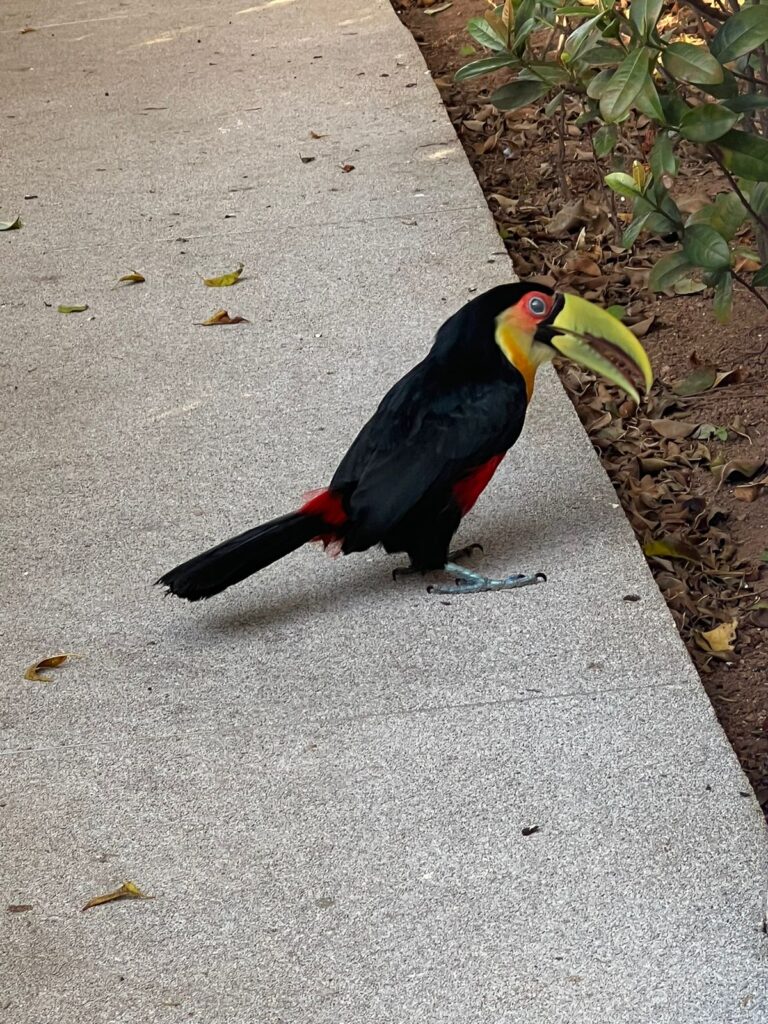Caption: A Brazilian marmoset hangs out at the PACA campus in the midst of a busy school day. [by Dr. Cristina Meier]
by Karina Lee
Every year, according to PETA there are 110 million animals that are killed in the name of scientific research and human advancement. These animals include mice, rats, frogs, fish, birds, rabbits, hamsters, guinea pigs, monkeys, and even dogs and cats. These numbers only include the animals in the United States that are used from testing medicines to experimenting with products like cosmetics and cleaning supplies.
Growing up with pets, I have always believed that even animals deserve kindness and respect.

While many believe that animal testing is necessary for medical progress, it is time to reconsider the use of animals in research. Animals are beings that are also capable of experiencing pain and fear. With the advancements of modern technology, we now have effective alternatives that can replace animal testing without causing harm to them.
I believe that students and families at PACA should care because the values we have as Christians should also extend to all creatures. We have the responsibility to take care of the world we live in along with its living organisms.
Animal testing raises important ethical questions. These animals often endure pain, stress, and confinement in labs during experiments they cannot agree to. They live in cages, away from their natural environments, and sometimes go through surgeries, chemical exposure, and psychological testing. Many are killed after the research is complete. This treatment opposes our values about how living creatures should be treated.
Beyond ethics, animal testing is not as effective as many assume. Animal biology is different from human biology, which means results gathered from animal testing do not always apply exactly to people. For example, the drug thalidomide, which causes birth defects in thousands of babies in the 1960s, had passed animal testing before it was approved for human consumption. Even today, the U.S Food and Drug Administration reports that around 90% of drugs that pass preclinical tests on animals, fail when they reach human clinical trials. These failures can cost time, money, and even lives.
In addition, many diseases such as Alzheimer’s and certain cancers do not naturally occur in animals, which means scientists often have to artificially induce these conditions in the lab. This practice not only creates unreliable results but also inflicts unnecessary suffering. Using animals in this way can slow down scientific progress rather than accelerate it.
Fortunately, science has developed new methods that do not involve animals. Techniques such as computer simulations, cell cultures, organ-on-a-chip technology, and studies using human tissues are becoming more advanced and accessible. These alternatives can often provide faster, more accurate results, and eliminate the ethical concerns surrounding animal use. For example, 3D models of human tissues allow researchers to test drugs directly on cells that closely mimic human reactions, offering more relevant data than tests on animals.
There is also a growing movement in the scientific and medical communities to move towards cruelty-free research. Many companies and research institutions are recognizing the benefits of using non-animal methods. Not only because they are more humane, but also because they often save time and reduce costs. Countries like the Netherlands and the U.K. have even announced plans to phase out animal testing in certain fields, showing that a shift is possible on a large scale.
At PACA, students and families can play a role by supporting local and global organizations that promote cruelty-free research and advocate against animal testing. Groups like PETA (People for the Ethical Treatment of Animals) and the Human Society often have campaigns that anyone can join.
Supporting these efforts helps raise awareness and encourages companies to invest in better alternatives. This is a practical way for our community to make a difference. PETA’s website has resources that help people to become involved simply through online support (GET ACTIVE ONLINE LINK HERE).
Using animals in research may have once been considered necessary, but today it no longer fits with our current scientific abilities or moral values. Continuing to rely on methods that cause pain and suffering to living beings, especially when better alternatives exist, is unnecessary. Protecting animals from harm while advancing medical and scientific progress is possible through cruelty-free research methods.
It’s necessary to support and invest in these cruelty-free research methods that take care of animal welfare, produce more accurate results, and promote better science. By choosing other means, we can make a lasting difference for both animals and humans. Something we can all do is stand up for compassion and science.














